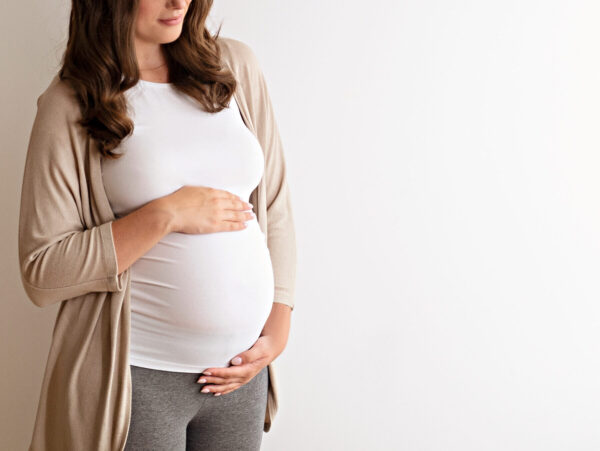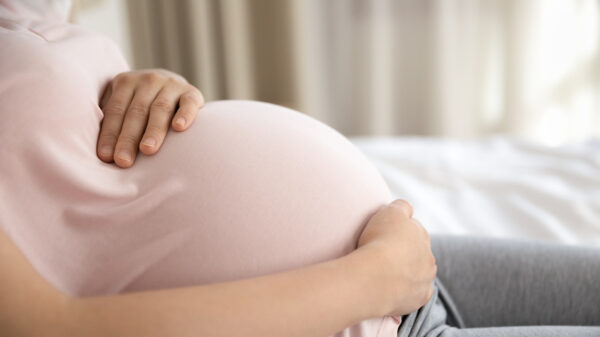Giving birth is a unique and life-changing experience, and deciding the right birth plan for you can be daunting. You might think a C-section is only used in emergencies but this isn’t the case.
You can choose to schedule a C-section in hospital as part of your birth plan. Elective means that the procedure is planned in advance and you do not go into labour.
There are a number of reasons why you may choose to have an elective C-section, including pre-existing health conditions or to simply have more control over your birth. You can discuss your birthing options with your midwife or doctor beforehand so you feel comfortable in your delivery.
What is a C-section?
A C-section is a birth option that involves having an operation to deliver your baby through an incision made just below your bikini line.
During your pregnancy you will be able to choose whether you would like to have a vaginal delivery, elective C-section or you may be advised to have one by your consultant for medical reasons.
If you request an elective C-section, your midwife will explain all the benefits and risks. This is so you can make an informed decision about what is best for you and your baby. If you decide to proceed, our friendly bookings team will liaise with your consultant and our team of anaesthetists to book your delivery date.
Many women feel anxious about giving birth. Our expert team of private midwives, obstetricians, neonatologists, and anaesthetists will listen to your concerns and provide the right knowledge to put your mind at ease.
Reasons for an elective C-section
There are many different reasons why an elective C-section might be recommended. These reasons can include:
- your baby is in the breech position, which means they are feet first in the womb
- you have a low-lying placenta, making vaginal birth risky
- high blood pressure or pre-eclampsia: this can cause complications during labour and vaginal birth
- previous C-sections: if you have already had a C-section, then having a vaginal birth afterwards could lead to uterine rupture and other complications
- infections: certain infections like HIV can be passed from mum to baby, so having a C-section reduces the risk of this happening
There are also non-medical reasons that you may wish to have a planned C-section. Anxiety about vaginal birth is common, and for some women a C-section is a better option.
Speak to your midwife or consultant if this is the case for you — they will be able to offer support during your labour, and explain the overall benefits and risks of a caesarean to you and your baby when compared to a vaginal birth.
When is an elective C-section scheduled?
Your appointment will most likely be booked before your due date so that there is less chance of you going into labour.
Planned caesareans are usually done from the 39th week of pregnancy. Delivering your baby earlier than this could mean they are born too early, which may lead to health complications for your baby.
What happens in an elective C-section?
It’s normal to feel nervous and excited about your elective C-section. Our dedicated maternity team will be with you every step of the way providing you and your baby with excellent care.
Before delivery
Before your C-section, you will be given a time and date so that you can prepare for the delivery. You will be advised to stop drinking and eating a few hours before your surgery.
On the day of your appointment, you will undergo pre-operative assessments including blood tests, scans and a review of your medical history. This is to ensure that you and your baby are both healthy and that any special requirements can be put into place.
During your C-section
Once inside the operating room, you will be given an anaesthetic such as an epidural or spinal anaesthetic. This only numbs the lower half of your body so you can be awake during the birth of your baby. A screen is placed across your stomach so you cannot see the operation being carried out.
Next, the surgeon will make incisions into your abdomen and womb. Your baby is delivered through the opening — they will be carefully lifted out of the womb before their umbilical cord is clamped and cut. Your baby’s vital signs like heart rate and breathing are checked to ensure that they are healthy.
After your baby has been delivered, the placenta is removed and the incisions are closed.
After your delivery
Once your C-section has been completed, you will be moved to the recovery room so that you can be monitored. You will also be given pain relief medication to manage post-operative pain.
You and your baby will have time to bond once you are stable in recovery, with many women being able to start breastfeeding soon after. Most women are able to go home after a few days, but this will depend on your recovery.
Our maternity team will support you throughout your birth journey, giving you instructions on how to clean your wound, manage your pain and what activities you need to avoid once you are back home too. It’s essential that you follow their advice to promote healing and prevent complications during recovery.
When you are discharged from the hospital, you will be advised of any follow-up appointments that you need to attend or when a healthcare visitor will visit you at home to check on your recovery.
Benefits of an elective C-section
There are many benefits to choosing an elective C-section, these include:
- reduced risk of birth trauma — vaginal delivery is physically and emotionally challenging but an elective C-section can provide you with a greater feeling of control and predictability of your birth
- prioritising your health — some women with pre-existing medical conditions such as high blood pressure may have an increased risk to their health when giving birth vaginally
- decreased risk of pelvic floor injury — these can happen during vaginal birth when the muscles or tissues become damaged or torn
- reduces the risk of complications during birth if you have a medical condition such as a low-lying placenta or if your baby is not in the right position for vaginal birth (breech)
- a planned delivery means you’ll know your babies exact birth date – making creating a new routine for you, your baby and your partner easier
- it speeds up delivery so can minimise the risks to you and your baby’s health
C-section risks
Like any major operation, a C-section does have potential risks.
Potential risks and side effects to mum can include:
- infection can occur at the site of the incision, in your uterus and in other parts of the body
- postpartum haemorrhage can occur as you lose more blood during a C-section
- blood clots can develop as your mobility is decreased during and after a C-section
- accidental injury to your surrounding organs such as the bladder — this is a rare complication
- longer recovery time than a vaginal birth as the incisions take more time to heal
Potential risks and side effects to your baby can include:
- breathing difficulties when they are delivered — this is because babies born from a C-section have an increased risk of respiratory distress syndrome where their lungs are not fully developed
- surgical injury caused by an accidental cut (rare)
Risks and complications during a C-section are rare and it is generally considered a safe procedure. Your midwife or doctor will go through any potential risks with you beforehand so you can be fully informed when making your decision.



